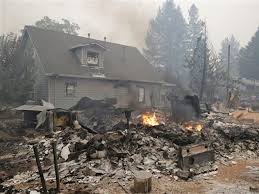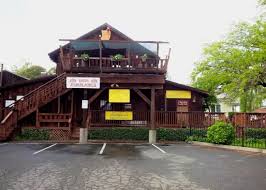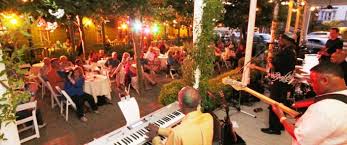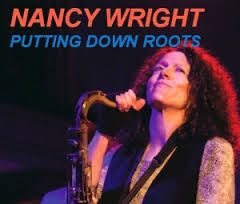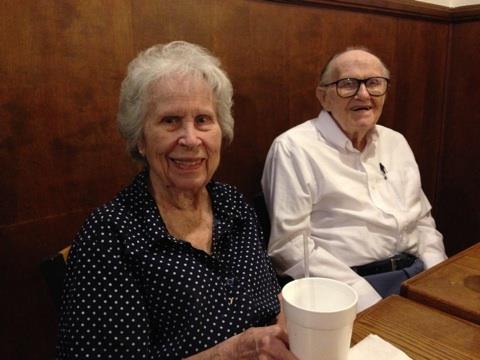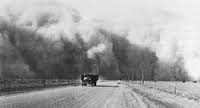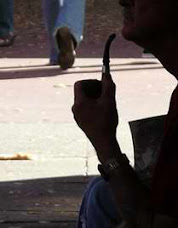Homer Barton would be pleased. If he could come back to see his farm on the Mendocino Coast 150 years later, he might be surprised to see the original beauty still at its peak.
Once a working farm and brewery just south of Mendocino village, the Brewery Gulch Inn has managed to sustain and cultivate this beauty in its perfect mini-climate. Dr. Arthur Ciancutti, the land’s owner since 1977, has used the natural protection from coastal winds and blessings of fresh water and fertile soil to a wonderful advantage.
Ciancutti lives in the refurbished original farmhouse and has in recent years created a glorious inn where travelers or locals can relax and enjoy the coastal scenery. In addition, the new inn which opened in 2000 boasts of a unique and once-in-a-lifetime story – told by its solid and ancient structural material.
About twelve years ago, Dr. Ciancutti – or Arky, as friends call him, happened on the find of the century through casual conversation in a local Mendocino bar, Dick’s. Big River bridge retrofitters talked of virgin 150-year-old redwoods that had been found buried in the Big, which was heavily used in early logging efforts.
A lover of natural wood – in addition to being a retired doctor and high-performance team builder and founder of The Learning Center (learningcenter.net/), Arky managed to get in while the gettin’ was good and, with a little help, was able to salvage, trade or buy over 100,000 board feet of the “guiltless” virgin redwood.
Milled right there on the farm, the beautiful timbers highlighted by tones of red and purple caused by mineralization are now crafted into the building and trim of the Brewery Gulch Inn. With its idyllic setting and lovely interior, no wonder the Inn has been listed as a Top Ten Romantic Inn in the USA, California’s Inn of the Year, and many other well-earned accolades.
Not recalling any local coverage of this nearby jewel, I happened to read about it while browsing through an outdated national magazine in a doctor’s office. I was interested in this distinctive endeavor just across the coastal hills and contacted Dr. Ciancutti for an interview. Arky, his fiancé Francesca and the inn staff cordially treated me to a guided tour and answered my questions.
What impressed me, beside the phenomenal physical beauty of the inn and its setting, was the authentic loving care of its proprietors – from the groundskeeper to the owner himself. Of course, departing guests gushed gladly to Arky while I was in hearing as well. There was more to this story than just an inn, I discovered.
Dr. Ciancutti and his fiancé Francesca Campbell took me past the building’s beauty and shared their love and plans for the ten acres of land on which it sits. The years of replacing and propagating of native trees, flowers (including hundreds of rugosa roses) and other plants showed as we walked through the meadows and rolling hills. Plus, a lush wetland area has been nearly fully restored using natural rock filters, with carved benches dotting its viewing areas, a favorite of bird-watchers.
Using only organic methods, the farming efforts are paying off, too. The Inn’s kitchen provides a gourmet menu laden with items using the farm’s own organic eggs, heritage apples, and various herbs. Future plans include growing their own potatoes and many other vegetables as they prepare to become a self-sustaining entity. In 2002, the homestead and inn were both designated as California Certified Organic Farmers – one of only two in the state, Arky related.
He also proceeded to impress me with a somewhat unknown fact that 20% of all fuel burned is a result of “moving food.” Intending to provide more of their own food and resource needs is not just a trend or whim. Growing numbers of storekeepers and businesses are merging their efforts to develop self-sustainable regions.
Dr. Ciancutti’s farm is working with the Coastal Economic Localized Link (CELL); other groups in our county focus on this practical goal of localizing: WELL (Willits), GULP (Greater Ukiah), Anderson Valley and Laytonville, among others. This topic warrants another article in the future, I’m sure.
The Brewery Gulch Inn folks are also involved in Nature Tourism Partnerships on the Coast. The idea of Eco-Tourism resonates with today’s environmentally-conscious travelers, and regional resorts are planning how to build on this concept. How can we draw tourists to enjoy this area’s gorgeous natural beauty without jeopardizing its viability or longevity?
Their next interactive forum invites regional community leaders, tourism professionals, business and land owners, in addition to public lands managers. Presented by the Mendocino Land Trust, the event will be held on March 29 & 30 at the Hill House Inn in Mendocino. Email naturetourism@mcn.org or call 707 397-1092 for more information. Back to the Gulch...
The rustic, solid copper beer “still” sits useless on the hill, the last fragment of Barton’s old brewery; however, Brewery Gulch Inn does provide an unparalleled hospitality bed and breakfast – Homer would be proud, and we should be, too!
Sunday, March 25, 2007
Sunday, March 4, 2007
Fat and Fin – a Spring Revival
It’s that time of year. You blow back and forth with the extremes: now the warm, sunny days teasing of spring, and then you get whipped back into the dark, blustery cold and wet of winter once again. Daffodils in full bloom while fresh snow sits beneath the hilltop firs. The battle of the seasons, if you will. New life pushing through the decay.
I tried to use this positive outlook as I viewed the putrid, rotting carcass of the beached fin whale on the Mendocino Coast near Westport – or what’s left of its carcass. To be honest, it didn’t really stink unless you stood downwind. But, thank goodness for a strong stomach.
My focus was not how ghoulish the scene was, but to capture the finality and reality of the huge mammal’s end. Of course, the cameras have been clicking for weeks – with a few making it to various online pages. One writer/traveler from Texas happened by early and has some good pictures of the whale shortly after landing onshore posted at henrymelton.blogspot.com/2007/02. My own shots are on this blog site.
When local photographer Suzette Cook-Mankins and I arrived, the decaying fin whale had obviously made a few tosses back out to sea on high tide, washing up more stripped and pitiful each time. With sodden loosely-woven strips of muscle and sagging torso, the graying mass was difficult for our cameras to distinguish from the curves of sand and foam at water’s edge.
There was some initial controversy reported in area news accounts of whether the whale’s body should be left to rot – or not. I had fancied some alternate resolutions, like using its blubber as an oil resource via early Native American tradition. One could design whale-skin slickers for spring or bring back the whale-bone corsets to pinch in our winter fat. Or maybe not.
It does seem right to allow its natural breakdown giving local birds and small animal life a feast of sorts. The trouble is with us, the other large mammals in the area; whatever happened to live and let live – or better, die and let die? Though it is technically an endangered species, we had no control of its passing and could have done nothing to revive it.
Apparently, the poor beast’s breakdown was aided by some roughing up courtesy of the human element. It must be some type of primitive – or just backwoods mindset to wreak havoc upon the felled giant. Man conquers the beast – not its actual destroyer; he just wants to pound his chest and stamp his boots as victor. Neanderthals.
Pickups have zoomed over the sand, with one reported stuck up on its fin until a second truck finally pulled it off as high tide threatened to submerge them all. Would’ve served them right.
Many of us have chosen to be onlookers. We ogle and gawk at such a chunk of Mother Nature. Normally relegated to a glimpse through binoculars or from a ship’s stern, we rarely can come this close. Moby Dick it was not, but this is as good as it gets. Even if it’s not a sperm, blue or humpbacked version – we’ll take it.
When we stopped to ask directions at the local store, the clerk looked bored and pointed to hand-printed travel directions pasted to the sales counter. Sensing her reluctance to chat it up, I read and exited with a shallow thank you. We were only another car of whale-viewers now become tiresome, I’m sure.
The crowds had thinned to only half a dozen as we hiked a fair distance to arrive whale-side. We climbed over and onto big jagged rocks for a better shot, a different angle. Cursing as the tide came in, our opportunity fading with the afternoon, we watched as the huge threads of gristle and skin puffed up with the flow of salt water. Hard to find its fin – this fin whale had already lost its namesake…we could barely make out the long toothless upper jaw hovering over the brown sand.
By next week or next month, it will have become a part of the tight, crawling crabs; gulls will have grown fat feeding on it. Plant life will have been given a big boost of nutrients and fertilizers. Spring will be that much more lively and fruitful because of this rare wash-up.
Our human stories, as well as nature tales, often contain the sad demise of one entity that, in turn, gives life and vibrancy to those who survive. This is just one example of nature’s accidental bounty.
I tried to use this positive outlook as I viewed the putrid, rotting carcass of the beached fin whale on the Mendocino Coast near Westport – or what’s left of its carcass. To be honest, it didn’t really stink unless you stood downwind. But, thank goodness for a strong stomach.
My focus was not how ghoulish the scene was, but to capture the finality and reality of the huge mammal’s end. Of course, the cameras have been clicking for weeks – with a few making it to various online pages. One writer/traveler from Texas happened by early and has some good pictures of the whale shortly after landing onshore posted at henrymelton.blogspot.com/2007/02. My own shots are on this blog site.
When local photographer Suzette Cook-Mankins and I arrived, the decaying fin whale had obviously made a few tosses back out to sea on high tide, washing up more stripped and pitiful each time. With sodden loosely-woven strips of muscle and sagging torso, the graying mass was difficult for our cameras to distinguish from the curves of sand and foam at water’s edge.
There was some initial controversy reported in area news accounts of whether the whale’s body should be left to rot – or not. I had fancied some alternate resolutions, like using its blubber as an oil resource via early Native American tradition. One could design whale-skin slickers for spring or bring back the whale-bone corsets to pinch in our winter fat. Or maybe not.
It does seem right to allow its natural breakdown giving local birds and small animal life a feast of sorts. The trouble is with us, the other large mammals in the area; whatever happened to live and let live – or better, die and let die? Though it is technically an endangered species, we had no control of its passing and could have done nothing to revive it.
Apparently, the poor beast’s breakdown was aided by some roughing up courtesy of the human element. It must be some type of primitive – or just backwoods mindset to wreak havoc upon the felled giant. Man conquers the beast – not its actual destroyer; he just wants to pound his chest and stamp his boots as victor. Neanderthals.
Pickups have zoomed over the sand, with one reported stuck up on its fin until a second truck finally pulled it off as high tide threatened to submerge them all. Would’ve served them right.
Many of us have chosen to be onlookers. We ogle and gawk at such a chunk of Mother Nature. Normally relegated to a glimpse through binoculars or from a ship’s stern, we rarely can come this close. Moby Dick it was not, but this is as good as it gets. Even if it’s not a sperm, blue or humpbacked version – we’ll take it.
When we stopped to ask directions at the local store, the clerk looked bored and pointed to hand-printed travel directions pasted to the sales counter. Sensing her reluctance to chat it up, I read and exited with a shallow thank you. We were only another car of whale-viewers now become tiresome, I’m sure.
The crowds had thinned to only half a dozen as we hiked a fair distance to arrive whale-side. We climbed over and onto big jagged rocks for a better shot, a different angle. Cursing as the tide came in, our opportunity fading with the afternoon, we watched as the huge threads of gristle and skin puffed up with the flow of salt water. Hard to find its fin – this fin whale had already lost its namesake…we could barely make out the long toothless upper jaw hovering over the brown sand.
By next week or next month, it will have become a part of the tight, crawling crabs; gulls will have grown fat feeding on it. Plant life will have been given a big boost of nutrients and fertilizers. Spring will be that much more lively and fruitful because of this rare wash-up.
Our human stories, as well as nature tales, often contain the sad demise of one entity that, in turn, gives life and vibrancy to those who survive. This is just one example of nature’s accidental bounty.
Subscribe to:
Posts (Atom)

